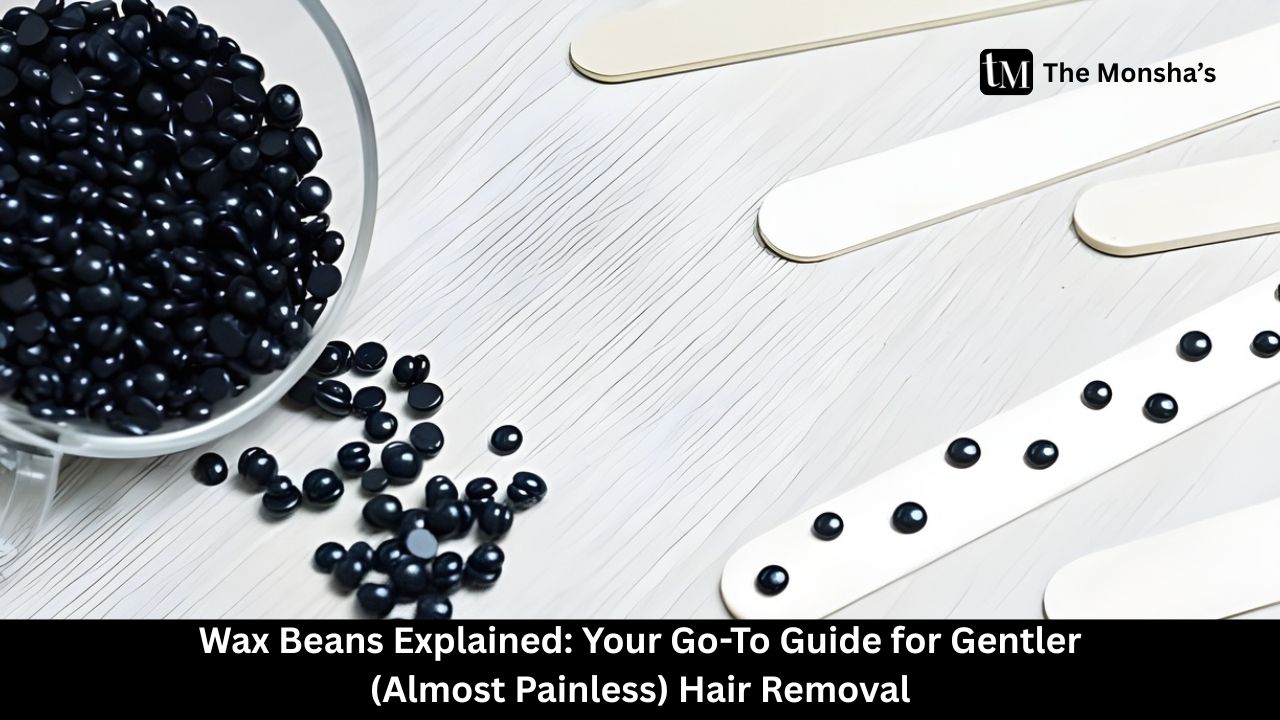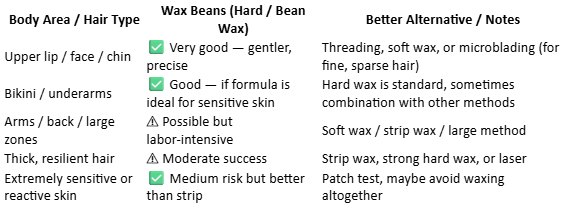
Wax beans (hard wax beads) offer a more skin-friendly alternative to strip wax — less pulling, better control, ideal for delicate zones — if you melt, apply, and remove them right. Misuse or poor-quality formulas still hurt. Use the right technique + aftercare and they can be your waxing BFF.
After a long day of chasing deadlines and juggling content calendars, the last thing I want is to wince through a painful waxing session. But when I first tried wax beans, I was skeptical: “Are these just another beauty gimmick?” Over time, with trial, error, and many “ow” moments, I discovered they can be a serious upgrade over traditional wax — if used wisely.
Picture this: you’re prepping for a wedding in Delhi, skin already feeling parched from heat and pollution — can wax beans make hair removal gentler? Let’s dive in (chai break advised).
Here’s what you’ll uncover:
Let’s unravel the bean magic ✨
Wax beans (also called hard wax beads, bean wax, or wax pellets) are small solid bits of wax that melt into a spreadable substance. Once applied, they harden and get removed without needing cloth strips (in many cases).
Unlike soft wax which must be removed with strips, wax beans become rigid yet flexible enough to peel off, essentially acting as their own “strip.” They often contain resins (rosin), beeswax or synthetic polymers, and sometimes calming ingredients (e.g. chamomile, essential oils).
You’ll often find salons calling them “hard wax beans,” “pearl wax,” or “bead wax” — but it’s mostly the same category with slight formula tweaks.
I’ll admit — they’re not perfect for every situation. But when they work, you’ll feel why so many estheticians swear by them.
Because bean wax grips hair more than skin, removal is gentler. Less tug equals less redness, less sting. Many beauty blogs praise them for being “less painful” compared to traditional wax options.
You skip the cloth or paper strips; the wax itself becomes peelable. Less mess, fewer steps.
You melt only what you need, apply in small zones. Overheating or melting big batches is less tempting, reducing waste and burns.
When formula + technique align, bean wax removes hair from root, giving smoothness for weeks.
They shine in facial areas, underarms, bikini lines — places where soft wax can hurt more. Because they’re less aggressive on skin, they’re often preferred for “delicate zones.”
Wax beans are not a universal solution. Here’s a pragmatic map:

In short: wax beans are excellent for small, delicate, or sensitive zones — less ideal for sweeping large areas unless you’re patient.
Here’s how I do it — with mistakes baked in so you don’t repeat them:
When you follow these steps, the experience improves dramatically. Mistakes are where most blogs fall short — we’re going to nail it.
Wax beans are safer when done right — but they’re not magic.
Common but mild
If any of these appear, stop using wax beans and seek a dermatologist.
Also, avoid waxing if your skin is sunburnt, broken, flaky, or you’ve used strong skincare actives very recently.
We should compare so your reader can choose wisely.


Wax beans strike a sweet spot for many — better than strip wax in gentleness, more manageable in small areas than lasers (cost/time).
We’ve got heat, humidity, dust, and melanin to contend with. Here’s how to tailor for Indian skin:
Also: many Indian skincare addicts online swear by Rica wax beans (available in local marketplaces) for reasonable quality.One user said: “I’ve been using Rica wax since last year… now I wax at ¼th the salon cost.” (amen to that!)
“Best decision ever.” — user comment
So you can use global formulas, but always test or adapt to local conditions.
Because I’ve slipped, burned, annoyed my skin so you don’t have to.
These stories keep me humble — we learn by failing.
Wax beans are a powerful upgrade over traditional strip wax — gentler, more controlled, especially suited for small zones — if your technique is solid and your formula is decent. But they’re not perfect for every situation (very coarse hair, large zones). Use them wisely, treat your skin kindly after, and they’ll repay you with smoother, gentler waxing.
If you’re someone who dreads the pull, wax beans might be your new best friend — just practice, respect your skin, and don’t skip the aftercare.
Q: Are wax beans safe for face?
A: Yes — especially for upper lip, chin, cheeks — just pick a gentle formula and do a patch test.
Q: Do wax beans hurt less than traditional wax?
A: Generally yes — because they cling more to hair than skin, reducing drag. But pain still exists depending on skin sensitivity.
Q: Can I reuse wax beans?
A: No — avoid reusing melted wax for hygiene reasons. Always melt fresh for skin safety.
Q: How often can I wax with beans?
A: About every 3–4 weeks is typical, when hair is about 2–3 mm long (so wax can grip).
Q: Which brand/types are good for Indian skin?
A: Look for rosins-reduced, low-heat, hypoallergenic bead waxes. Many Indians like Rica. Always patch test.
Q: What to do if skin reacts badly?
A: Stop waxing, apply aloe or calamine, cool compress, and see a dermatologist if severe.